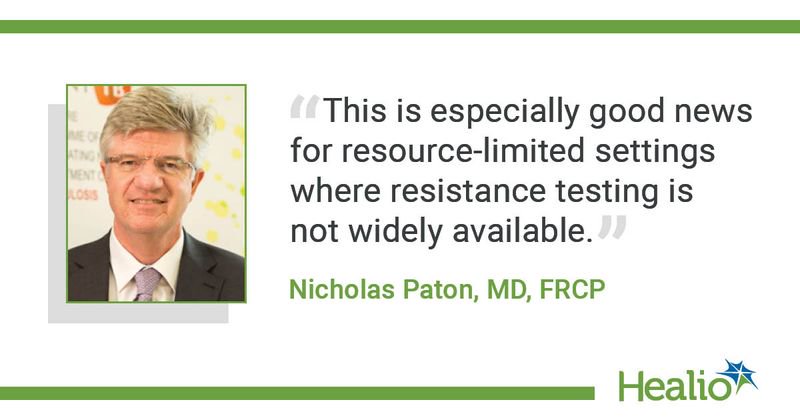New findings support WHO guidance on second-line therapy for HIV
Newly reported study findings offered support for a recent WHO guideline recommending dolutegravir plus two nucleoside reverse transcriptase inhibitors as preferred second-line therapy for HIV, a researcher said.
The randomized controlled Nucleosides and Darunavir/Dolutegravir (NADIA) trial demonstrated that a regimen of dolutegravir (DTG) plus two nucleoside reverse transcriptase inhibitors (NRTIs) offered highly effective viral suppression in people with HIV who failed a first-line, nonnucleoside reverse transcriptase inhibitor (NNRTI)-based regimen.

“We can now be confident in getting good virological responses using DTG plus two NRTIs in second-line therapy after NNRTI failure — as good as a protease inhibitor (PI) and two NRTIs, even when the NRTIs in the backbone are predicted to be inactive,” Nicholas Paton, MD, FRCP, a professor in the department of medicine at the National University of Singapore, told Healio.
Paton presented findings from the study during the Conference on Retroviruses and Opportunistic Infections.
The results also showed that the regimen was effective in a patient population with no predicted activity in prescribed NRTIs. It may have important implications for patients transitioning from an NRTI-only regimen to NRTI with DTG after treatment failure.
“This is especially good news for resource-limited settings where resistance testing is not widely available and so ensuring prescription of DTG with fully active NRTIs is often not feasible,” Paton said.
Guidelines ‘full of caveats’
In a press briefing about the results, Paton said the 2018 WHO guidelines that recommended DTG with two NRTIs as preferred second-line therapy in a public health approach for resource-limited settings were based on one randomized controlled trial that “left a lot of gaps in the evidence.”
“The guidelines were full of caveats about this group with no predicted active NRTIs,” he told Healio. “The guidelines effectively went out on a limb, discarding a longstanding proven effective second-line regimen — a PI plus two NRTIs — for one with a potentially massive problem when implemented in the public health approach, but fortunately it turned out to be a good call. NADIA proved that this is safe, at least in the short-term, to 48 weeks. I would expect the guidelines to be a lot more confident about this recommendation in the next edition.”
‘Reassuring’ findings
For the study, Paton and colleagues enrolled 464 patients with HIV from Sub-Saharan Africa who experienced treatment failure on a regimen of NNRTI, tenofovir (TDF) and lamivudine (3TC) in an open-label noninferiority trial. They randomly selected patients to receive either DTG or ritonavir-boosted darunavir (DRV/r) and TDF or zidovudine. All patients also received 3TC.
The researchers evaluated the patients’ viral loads at 24 and 48 weeks and set the percentage of patients with a weekly viral load of less than 400 copies/mL at week 48 as the study’s primary outcome.
Results showed that 58.5% of patients had intermediate- to high-level resistance to TDF and 92% had resistance to 3TG at baseline. At week 48, the percentage of patients with a viral load lower than 400 copies/mL was 90.2% in the DTG group and 91.7% in the DRV/r group. In patients who had no predicted active NRTIs in their regimen, the percentage of patients with a viral load below 400 copies/mL was 92.4% in those who received DTG and 93.7% among those in the DRV/r arm.
Paton said dolutegravir was found to be “noninferior but not superior to darunavir.”
“Our findings are also reassuring for large-scale programs that are in the process of switching patients from [efavirenz (EFV) to DTG (+TDF/ 3TC)] regimens, often without viral load testing, so again there are concerns about patients with occult viral load rebound with accumulated NRTI resistance; our results allay those fears,” Paton said. “These patients should do well.”
Paton said that the main limitation of the analysis was that the researchers have access to only 48 weeks of follow-up data so far, but there are plans to follow up with all patients at 96 weeks — which may allow “more robust conclusions” to be drawn.
“It looks like we don't fully understand how NRTI resistance plays out when these drugs are combined with very potent drugs like DTG and DRV/r, and that in particular the combination of TDF/3TC forms a solid backbone, even when the theory and the resistance tests suggest it should be compromised by mutations from prior use,” he said.

